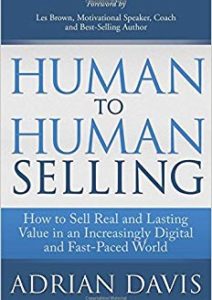What does your pricing say about you? Most salespeople lack the confidence to charge full price. Regardless of the pricing model, you have worked hard to develop when push comes to shove, and often even before push comes to shove, salespeople cave in and offer discounts. This reflects an underlying lack of confidence in the value of your company’s product and services.
You can dramatically increase your profitability in the coming year by emphasizing pricing realization as much as a pricing strategy. Pricing realization means that when your sales team is negotiating, they negotiate in such a way that there is no question in the prospect’s mind of the value they are purchasing, and consequently, they are willing to pay full price.
Implement these 5 tips to ensure your salespeople have the confidence to charge full price.
- Build relationships with all key stakeholders. If key stakeholders are not invested in the relationship with your company, they will have no qualms about pushing for discounts that hurt your bottom line. Those salespeople that take the time to enroll all stakeholders in the outcome they can provide are much more likely to have the confidence to engage in profitable business. This is primarily because they are able to perceive and understand the value their proposed solution is creating for each stakeholder.
- Understand the lay of the land. In order to realize full pricing, it is critical that salespeople have a substantive understanding of the problem they are solving. They must understand what the prospect is trying to accomplish, what external threats are interfering with the achievement of their objective, and what internal challenges are creating complications. It is the in-depth understanding of these three elements that enables salespeople to create customized solutions that excite their prospects.
- Understand your prospect’s decision-making process. Far too many salespeople forecast close dates for their opportunities that are based on wishful thinking rather than fact. Once they have entered a close date in the CRM, they now feel personally obligated to make that close date a reality. As the close date looms closer, these salespeople engage in acts of desperation and deep discounting, hoping this will entice the prospect to act in time to honor the forecast. Close dates should not be set without knowledge of how decisions get made within an organization. Only when the salesperson understands a) who gets involved, b) when they get involved, c) what they are looking for when they get involved, and d) the internal politics and systems that need to be navigated for successful adoption, can a salesperson accurately project when a prospect will be in a position to make a decision. Any other dating on a sales opportunity is mere conjecture and will surely disappoint both the salesperson and sales management.
- Customize your solution. When salespeople haven’t done their homework, they are not in a position to understand how to create real value. They end up offering what they think is a great solution, but in fact, it’s no solution at all, it’s simply a bundle of products and services. A real solution targets, with pinpoint accuracy specific challenges the organization is facing. It combines only those products and services that effectively address these specific challenges. Moreover, the combination and configuration of the solution must be unique to the salesperson. It is the combination of fit and uniqueness that gives salespeople confidence to charge what they are worth.
- Articulate your value with color. Having taken the previous four steps, you might think that getting prospects to agree to pay full price would be automatic. This simply isn’t true. While the previous four steps are critical, you cannot make the assumption that the prospect actually understands your value. You must spell it out. You must articulate your value with specificity and nuance for each stakeholder. Depending on his or her functional role and objectives, each stakeholder will have a slightly nuanced view of the definition of value. You must connect the dots for them in your proposals and presentations. Don’t rely on boilerplate text. Customize, customize, customize!
While these 5 tips require some additional work, it’s actually less work than running around and readily offering discounts at the first sign of resistance. Follow these 5 tips and see how quickly you create happier customers and more profitable transactions.













Comments (3)
I find the article an eye opener…. Quite interesting
Inline with the article, going by such relationship will really help
Recently I have been seeing articles on this topic and it has been very instructive. Value should be the key to every sales person rather than putting a wrong foot forward. Do your homework, customize your solution, meet the decision makes, set accurate forcast and articulate the value and go for the kill. Keep value above pricing all the time.